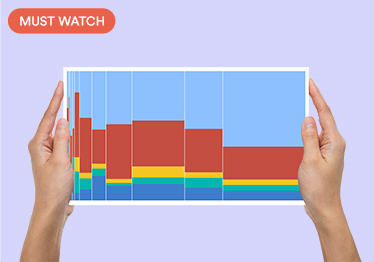
What is Customer Feedback?

Customer feedback is a crucial part of almost every business. It seems simple to say that understanding your customers and users will allow you to better cater to their wants and needs, but this can be harder in practice! Before starting to measure and analyze customer feedback, let's make sure we run through the basics of what customer feedback is.
Different forms of customer feedback
Customer feedback can come in many different forms and from many different sources. It can be extremely well-structured, like a multiple-choice survey. Or it can be messy and difficult to interpret, like feedback from a website comment section.
Here are the most common ways you can collect customer feedback:
- Customer feedback survey: a structured questionnaire designed to collect feedback from customers
- Social media: comments, ratings, suggestions, and general sentiments left on social media sites
- Website prompts: a website pop-up that prompts users to quickly rate a feature, product, or experience
- In-product prompt: users can be called upon to quickly rate their experience while they are using a product.
- Third-party reviews and ratings: you can also find feedback on user-generated review sites and rating aggregators.
Open-ended and Closed-ended feedback
You can divide customer feedback broadly, into two categories: open-ended and closed-ended responses.
An open-ended response is one where the customer is able to respond in their own words. Users are free to describe specific issues they are having and suggest ways to improve a product. Closed-ended responses have a set list of options for users to choose from, like multiple-choice questions and ratings on a numeric scale. Although this form of feedback is significantly less detailed than open-ended answers, the results are a lot easier to interpret and analyze.
| Closed-ended questions | Open-ended questions |
| On a scale of 0-10, how satisfied are you with this product? | What do you like most about this product? |
| On a scale of 0-10, how likely are you to recommend this product? | Who are you most likely to recommend this product to? |
| On a five-point scale, how difficult was your experience? | What did you find difficult about your experience? |
Common customer feedback metrics
Customer feedback metrics are a great way for you to gauge how satisfied, interested, and loyal your customers are. The common metrics – Customer Satisfaction, Net Promoter Score, and Customer Effort Score – are particularly useful when you can compare them over a period of time.
Customer Satisfaction
Customer Satisfaction is the most generic form of customer feedback metrics. You can gauge customer satisfaction by asking a simple question like, “On a scale of 0-10, how would you rate this product/company/brand?”
The most common way to measure customer satisfaction is with a Top 2 Box score. This is calculated by taking the share of the two top options (for example, 9-10 on a 0-10 scale) as a percentage of all responses. The average, median, or mode score are also adequate ways of measuring satisfaction.
Tutorial: Measure Customer Satisfaction in Displayr
Net Promoter Score (NPS)
The Net Promoter Score measures how likely a respondent is to recommend a product, company, or brand. It is based on responses to a single question: “On a scale of 0-10, how likely are you to recommend this product/company/brand to a colleague or friend?”
Then you can calculate your NPS with the following formula:
NPS = Percentage of Promoters – Percentage of Detractors
Where:
- Detractors: respondents who gave a score between 0-6
- Passives: respondents who gave a score between 7-8
- Promoters: respondents who gave a score between 9-10
The NPS is a measure of customer loyalty and a predictor of revenue growth.
Tutorial: Calculate Net Promoter Score in Displayr
Customer Effort Score (CES)
The Customer Effort Score measures ease of use by simply asking customers to rank their experience on a scale of “Very Difficult” to “Very Easy”. Respondents who found a product difficult to use are vulnerable to churn, so it’s important to identify the pain points in the user journey.




